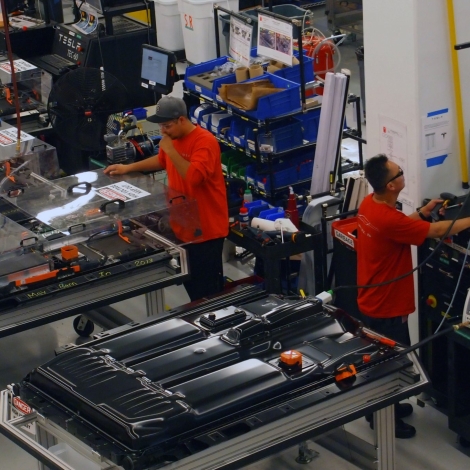The supply of critical materials has emerged as a theme in the transition to clean energy. The manufacture of electric vehicles, solar photovoltaic panels and wind-power generators requires more minerals than their equivalents that consume fossil fuels.
The critical minerals needed include copper, lithium, nickel, rare earths, silicon and others. The issue raises questions regarding the feasibility and speed of energy transition, the economics and the geopolitical consequences. Strategies exist to deal with this problem, however:
- Increase mining and diversify supply
- Innovate so critical materials use is avoided or minimized
- Circular economy concepts that maximize reuse and recycling
Innovation has a key role to play short term as its impact is strongest and production ramps up. It should be the starting point of efforts to reduce critical materials dependency. Electric vehicle batteries and permanent magnets are the two applications that receive most attention, and it’s clear that innovation has a key role to play in both fields.
Design can balance shortages in battery materials
While car batteries are called lithium-ion batteries, they contain only 3 percent lithium by weight. The cathode that typically consists of nickel, manganese and cobalt can account for 15 percent of the total battery pack weight. Cathode weight can be 60-70 kg for a midsize car. Electric vehicle production is projected to increase from 6.2 million units in 2021 to 40 million units in 2030. That would imply 2.4-2.8 Mt cathode metals will be needed. The tendency is for cathodes with high nickel and low cobalt content (NiMnCo 811, containing 80 percent nickel). This trend reduces cobalt dependency compared to earlier cathode compositions. World nickel production was 2.5 Mt in 2019, so this growth would double demand. Nickel prices have already doubled between 2017 and 2021 to a level of 20 USD/kg. Cathode materials alone can amount to 1500-2000 USD per car at current prices, a significant share of the total vehicle cost.
Innovation should be the starting point of efforts to reduce critical materials dependency.
So, there is a clear incentive to find other solutions. Chinese companies have developed lithium-boron batteries with a lithium ironphosphate (LFP) cathode based on low-cost abundant materials. It reduces the cost from (USD) $140-160/kWh to $85/kWh. At the same time the battery is safer due to the materials composition (Sanderson, 2021). The only drawback is that the weight per unit of energy of cell material doubles, so range decreases. Still, for city vehicles this may be acceptable. There is still a possibility to improve LFP battery chemistry. One example is through the addition of silicon to the graphite anode (Jaroni et al., 2019). The Chinese company BYD has developed the so-called blade LFP battery. While most car batteries contain cells placed together into a module and then a pack, in this alternative design, long thin battery cells are placed directly into a battery pack. Through this design the company can pack 50 percent more cells into the battery pack compared to conventional LFP batteries. The approach saves space and makes up for some of the inherent cell weight and range disadvantages due to reduced casing needs.
Permanent magnets: the ongoing search for sustainable design
A second area of attention at this moment relates to permanent magnets. These magnets are used in electricity generators (notably high-performance wind turbines) and in space- and weight-saving electric motors (electric vehicles). Going forward, electric vehicle growth will be the key market segment for permanent magnets. Rare earths, notably neodymium and dysprosium, are widely used for permanent magnets in electric generators (e.g. wind turbines) and in electric motors (for vehicles). Rare earth permanent magnet applications are projected to increase from 29 percent to 40 percent of the total demand of rare earths by 2030. In fact, the situation is even more constrained, as only a few out of the seventeen rare earth elements that are co-produced are suited for magnets.
Neodymium-iron-boron (NdFeB) magnets lend themselves to compact designs that are important for lightweight applications and lower manufacturing costs. They also improve the energy efficiency. The total rare earth element content is around 30 percent by weight in the magnet, and its material cost accounts for around 70% of the total magnet cost or even more. In commercial sintered NdFeB magnets, neodymium is usually partially substituted by other rare earth elements including praseodymium, dysprosium and terbium. Because neodymium and praseodymium usually co-exist in ore and these two elements have similar physical and chemical properties, it is more economical to produce a praseodymium-neodymium alloy instead of pure neodymium metal from ore and to use this alloy as the raw material of the magnet.
The prospect of a supply crunch is daunting as it would halt vehicle production.
Neodymium is typically 10-18 percent of the rare earth content of commercial deposits of the light rare earth minerals. Global reserves of neodymium are estimated at about 8 million metric tons, making it the second most abundant rare earth element after cerium. So, the resource is adequate, but short- and medium-term growth in supply may pose a challenge. Another possible challenge is the fact that mining and magnet production is strongly concentrated in China, at least for now. For neodymium magnets to perform at elevated temperatures (in cars), significant amounts of dysprosium are added (up to 12 percent by weight). However, in terms of relative abundance in the Earth’s crust, dysprosium constitutes less than 1 percent of all rare earth elements. As a consequence, the dysprosium supply cannot expand fast enough to meet the growing demand for high-temperature neodymium magnets for EVs. Therefore, alternative additives need to be found.
With permanent magnet weight between 1.5 and 5 kg per vehicle and the price of neodymium at $120/kg, the cost exposure seems manageable. However, the prospect of a supply crunch is daunting as it would halt vehicle production. Renault and Tesla have already employed wound rotor and induction motor technologies, respectively, eliminating rare earth magnets. These and other technologies, notably switched reluctance motors and the replacement of rare earth magnets with low-cost ferrites, can perhaps form the basis of even higher-performance traction motors in the future. Companies trying to cut their use include Japan’s third-largest car maker, Nissan, which is scrapping rare earth magnets from the engine of its new Ariya model. Germany’s BMW did the same for its iX3 electric SUV this year, and the world’s two biggest automakers, Toyota and Volkswagen, are also cutting back on the minerals. Manufacturers accounting for 46 percent of total light vehicle sales in 2020 have said they have scrapped, plan to eliminate, or are scaling down rare earth magnets in electric vehicles.
Work also continues to find new permanent magnet formulations that reduce or eliminate the use of rare earth metals.
This brief overview of two key applications shows the importance of the critical materials supply for the success of energy transition in the coming years. Engineering sciences play a critical role in finding a viable pathway that will allow an accelerated energy transition. Energy transition will be a growth market going froward, countries that can build a leading position will have good economic prospects. At the request of its member countries, IRENA will continue to focus on critical materials as an enabler of energy transition.
Read Dolf Gielen’s paper published by IRENA: Critical Materials for the Energy Transition
About the Author
Dolf Gielen has served as Director for Innovation and Technology at the International Renewable Energy Agency (IRENA) since 2011. He has more than 25 years of experience in energy transition strategy development and implementation, as well as technology policy in an international context. He has a PhD from Delft University of Technology in Delft, The Netherlands.

